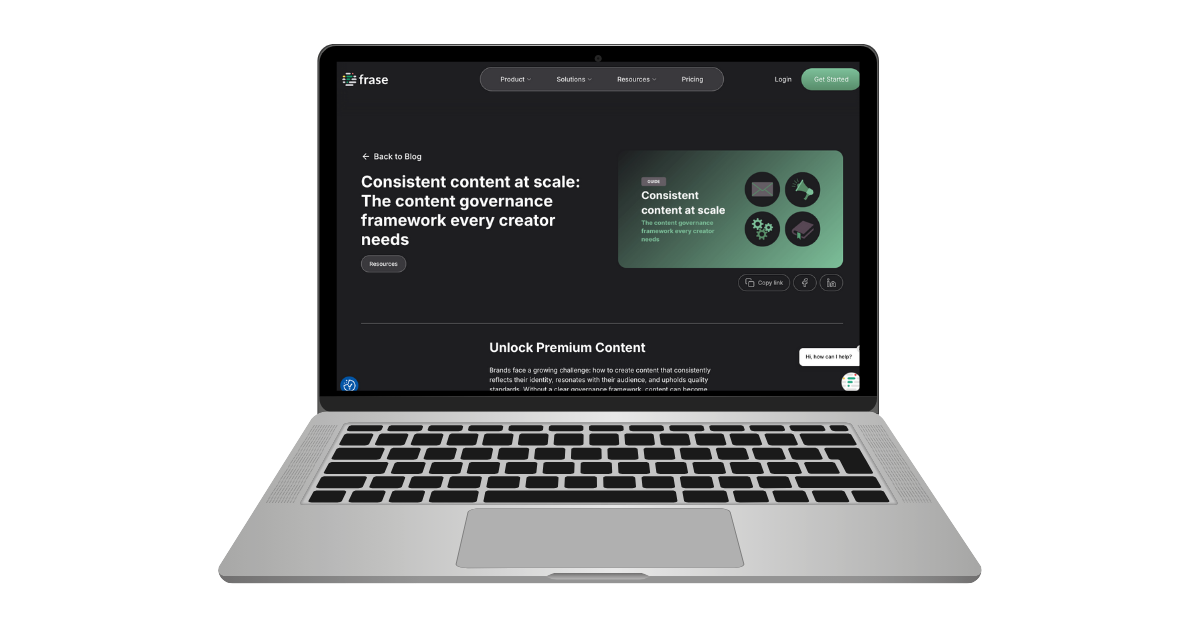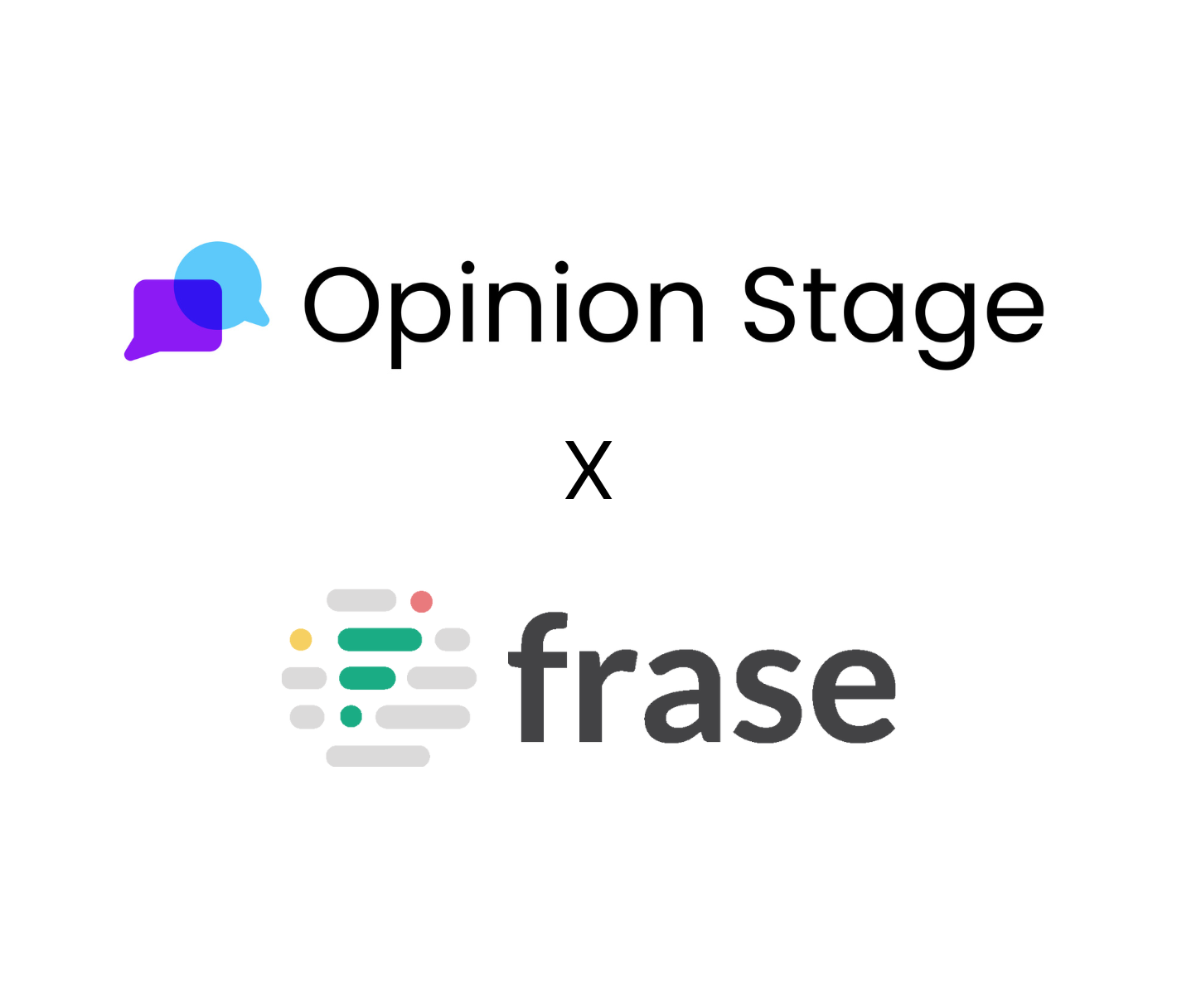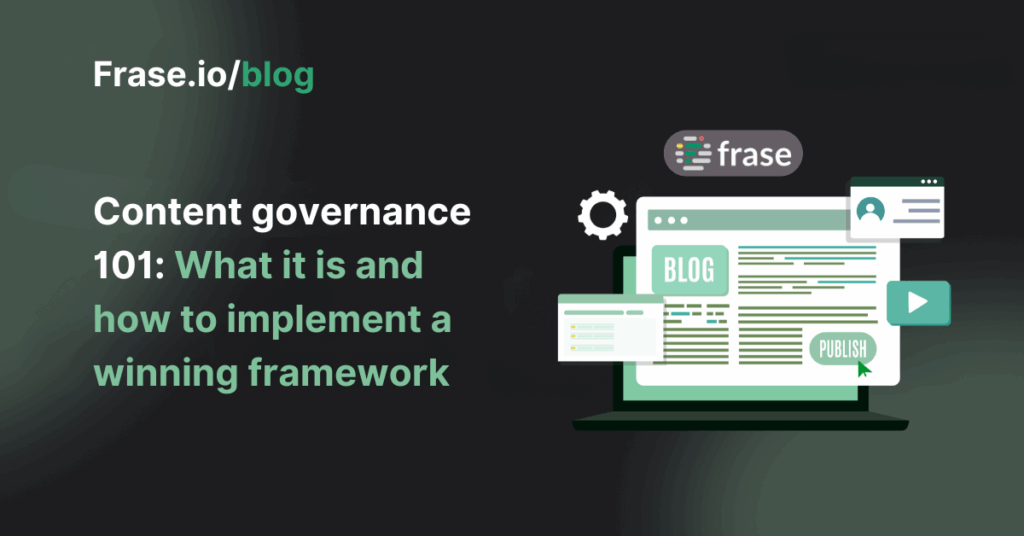Content governance 101: What it is and how to implement a winning framework
Content insights & strategyContents
Content is no longer just words on a page—it’s the voice, personality, and trust your brand shares with the world. But as teams grow and channels multiply, keeping that voice consistent can feel like trying to tame a wildfire.
Without a clear system to guide how content is created and managed, brands risk losing control over their messaging, leading to confusion and missed opportunities. That’s why a content governance plan isn’t just a nice-to-have—it’s a business imperative.
In this article, we’ll unpack what content governance really means, why it’s critical for every growing brand, and how to build a practical framework that turns content chaos into clarity. Along the way, we’ll highlight how modern tools can embed governance directly into your creative process, making consistency effortless.
The case for content governance
As content ecosystems become more complex, maintaining control over messaging is harder than ever. Teams are often spread across different departments, subject matter experts, external agencies and contractors, and even continents—all producing content pieces in formats ranging from blogs and landing pages to emails and social media.
Without a strong governance framework, brands risk sending mixed messages that confuse customers and weaken brand trust. Inconsistent tone, off-brand language, or outdated information can hurt credibility quickly. Not to mention the inefficiency of revising and reworking content because editorial guidelines weren’t clear or enforced.
Companies that fail to implement governance often face longer review cycles, duplicated effort, and a lack of cohesion that undermines marketing goals. Conversely, well-governed content fosters trust, builds brand equity, and accelerates content production without sacrificing quality.
Defining content governance
Content governance is the set of policies, processes, and tools that guide your organization through out the entire content lifecycle, from the planning stage to creation, review, and maintenance. It’s different from content strategy—which focuses on what content to create and why—and content operations, which cover the day-to-day execution.
Governance focuses on how content is produced consistently, by establishing clear standards around brand voice, style, terminology, and approval workflows. Modern governance frameworks also incorporate technology, using AI and automation to embed rules directly into the writing process.
At its core, content governance ensures that every piece of content supports your brand’s identity and business objectives—no matter who’s writing or where the content appears.
Benefits of strong content governance
Implementing a robust content governance framework offers clear advantages:
- Consistent brand identity: Every piece of content reflects your unique voice, tone, and style—creating a seamless brand experience across all channels and touchpoints. This strengthens recognition and builds trust with your audience over time.
- Improved collaboration: Clear governance tools give writers, editors, and stakeholders a shared understanding of brand expectations. This alignment makes it easier for cross-functional teams to produce cohesive, high-quality content from the first draft.
- Faster review cycles: With predefined rules for tone, style, and terminology, content is closer to “publish-ready” from the start—cutting down on back-and-forth revisions, approval bottlenecks, and last-minute rewrites.
- Scalability: Confidently expand your content output across more channels, formats, and markets without sacrificing quality or brand consistency. Governance tools make it easy to maintain standards even as your team and workload grow.
- Compliance and risk management: Built-in checks help ensure every piece of content adheres to legal, regulatory, and brand guidelines—reducing the risk of costly mistakes, reputational damage, or compliance issues.
- Multi-brand support: Manage multiple brand identities, product lines, or market segments from a single governance framework. This makes it simple to maintain distinct voices while still benefiting from a unified content management process.
Together, these benefits help organizations build trust with their audiences, drive meaningful engagement, and foster an efficient, scalable content process.
Common challenges in implementing governance
Despite the benefits, many teams struggle to put governance into practice. Resistance can come from writers who feel constrained by rules, or from managers who find governance too complex to maintain.
Common pitfalls include:
- Overly rigid or vague guidelines that confuse rather than clarify: When rules are too strict or too broad, they can stifle creativity or leave room for misinterpretation—resulting in content that misses the mark.
- Governance documents stored in inaccessible places, leading to inconsistent use: If guidelines live in scattered folders or hard-to-find files, teams are less likely to follow them consistently, creating brand drift over time.
- Lack of integration with content creation tools, making compliance cumbersome: When governance lives outside the writing workflow, it becomes an extra chore instead of a natural part of content creation, slowing teams down.
- Difficulty keeping governance updated as brands evolve: Outdated rules or references can lead to inaccuracies and inconsistencies, especially as messaging, product offerings, or target markets shift.
- Balancing AI-generated speed with human creativity and oversight: Without the right processes, AI can produce content quickly but miss the nuance, originality, or context that human input provides—making quality control essential.The good news? The right technology can break down these barriers by embedding governance into everyday workflows, making it easier and faster to create on-brand content, while avoiding content chaos all-together.
Elements of an effective content governance framework
A strong content governance plan combines policies, people, and technology. Here are key elements to consider:
Reference materials
Centralize your internal knowledge so everyone writes from the same trusted sources. For example, Frase’s Reference Docs feature lets you upload product documentation, campaign research, and key messaging files—PDFs, DOCXs, CSVs, and more—directly into the AI content workflow. This ensures every draft reflects the latest, most accurate information.
Voice & tone definition
Document your brand personality clearly and make it repeatable across all content. Frase’s Brand Voice feature helps you create profiles by analyzing existing content or building from scratch with customizable voice characteristics like formality, emotion, and assertiveness. Agencies can even manage multiple brand voices for diverse clients. Plus, you can set your Brand Voice in under 90 seconds!
Style and formatting rules
Consistency in grammar, punctuation, and formatting is essential. With Frase’s Style Guide, you can set detailed custom rules and get real-time feedback as you write—keeping every piece polished and aligned with your editorial guidelines.
Terminology control
Maintain control over preferred words and phrases to avoid brand inconsistencies. Frase’s Terms feature flags off-brand words and enforces approved terminology, whether content is created by new hires or AI, helping your brand language stay confident and human.
Review & approval workflows
It’s important to establish and clarify exactly who is responsible for reviewing content and at which stages. This will help ensure that the quality of the content is maintained consistently, without causing unnecessary delays in the production process.
Training & onboarding
Make sure new team members understand and adopt your content governance plan quickly with clear documentation and practical tools.
Tools and technology for content governance
Many teams rely on manual systems like spreadsheets and shared docs to maintain governance, but these can be inefficient and error-prone.
AI-assisted tools change the game by integrating governance rules directly into the content creation process.
Platforms like Frase combine reference documents, brand voice profiles, style guides, and terminology enforcement in one place, so governance isn’t an afterthought—it lives inside every draft. Check it out in the video below:
This approach empowers teams to write faster, more consistently, and with less friction.
What are the benefits of leveraging tech for content governance?
Technology streamlines content governance by removing the guesswork and manual oversight that slow teams down.
Scalable consistency
Leveraging a tool like Frase ensures consistency at scale by automatically applying brand voice, style rules, and approved terminology across every piece of content—whether written by humans or AI.
Reduced risk
Second, it reduces compliance and accuracy risks by flagging off-brand language, outdated information, or factual errors before content goes live.
Quality content at speed of business
Finally, it accelerates production without sacrificing quality, enabling teams to publish more frequently while staying aligned with brand and regulatory standards.
The future of content governance
Generative AI is transforming content creation, opening new possibilities for personalization and speed. But with these advancements comes greater risk: without strong governance, AI can amplify inconsistencies or off-brand messaging.
Going forward, content governance will be non-negotiable. Organizations that embed governance in AI workflows will gain a competitive edge—producing scalable, on-brand content at speed while reducing errors and risk.
Emerging trends include multi-brand voice management, automated compliance checks, and continuous updating of governance rules—all powered by intelligent platforms like Frase.
Why you need a repeatable governance framework now
Inconsistent content doesn’t just confuse your audience—it costs your brand trust and market share. As content demands grow, you need a clear, repeatable governance framework that empowers your team to produce consistent, high-quality work at scale.
The best governance frameworks don’t live in static documents or siloed systems. They live inside the content creation tools your teams use every day—making adherence effortless and natural.
Strong content governance is the foundation for consistent, scalable, and trustworthy content that fuels growth.
Consistent content. Every time.
Ready to build your ideal content governance framework? Download our comprehensive guide, “Consistent Content at Scale: The Framework Every Creator Needs,” to get a step-by-step model and learn how to implement governance that works—backed by tools designed to embed your brand’s standards into every piece of content.
Download the Content Governance Framework Guide!
Get my strategy



